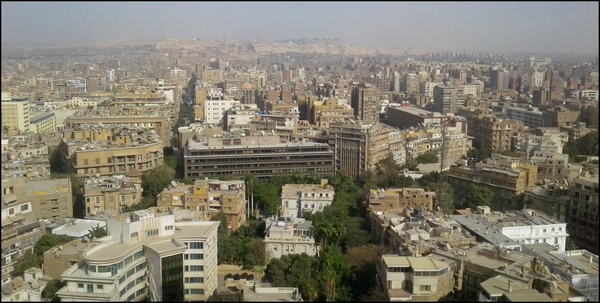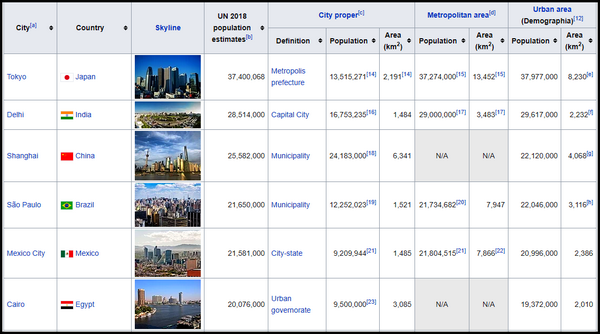
8 Surprising Facts about Cairo, Egypt
I wasn’t especially planning to visit Egypt this year. But it was on my list of potential destinations since I was searching for countries to visit in the region of Turkey.
Recently, however, I was offered a rather good assignment of luxury hotel reviews & a travel guide update for Cairo. I did some preliminary research about Egypt’s entry requirements, costs and temperatures (I knew it became broiling hot there in certain months). It all checked out ok, at least if I moved fast to beat Cairo’s ridiculously roasting summer.
I accepted the assignment and immediately began a much more thorough research about Cairo, flights, entry procedures, affordable accommodation and things to see and do.
Before my research, I didn’t actually know much about Cairo or Egypt, except for the most obvious landmark destinations: the pyramids and Sphinx.
As for Cairo, I had rather assumed it was a messy, dirty, chaotic, not-especially-well-developed massive sprawl, with little or nothing to actually see in the city. I figured Cairo was mainly an entry/exit point into Egypt, from which visitors hurriedly moved on to see the great pyramids and other ancient wonders.
However, when I began investigating Cairo, I was almost immediately blown away by all the amazing sights, architecture, museums and other aspects of the city. In the process, I learned many interesting & surprising facts about ancient Cairo.
Here are 10 surprising things I learned…
1. The pyramids and Sphinx are in Cairo
The location of Egypt’s great pyramids was the most astounding discovery I made. I had always just assumed that the famous pyramids & sphinx were located out in the middle of the desert somewhere, miles and miles away from Cairo or any other city. No doubt part of my assumption was based on photos I’d seen, in which the pyramids are always clearly set in a vast sandy desert.
In fact, they are situated just 20 km / 6 miles from central Cairo, a 25-40 minute drive, depending on traffic.
The pyramids & Sphinx are in an area called Giza. Perhaps in antiquity their location was considered far from Cairo. But nowadays Giza is just part of Cairo’s massive sprawl.
Yes, the pyramids are indeed still set in a vast open desert. But also situated right on the edge of the UNESCO Giza Necropolis zone there are large luxury hotels and city sprawl.

2. Cairo is the largest city in all of Africa and the Middle East
I vaguely knew that Cairo was a huge city, but I didn’t realize just how massive it is. Central Cairo’s population of more than 9.5 million residents easily renders it the largest city in both Africa and the Middle East. The But Cairo metropolitan area houses more than 20 million people.
In fact, Cairo is currently the 5th largest city in the world by population, outdone only by Shanghai, Delhi, Tokyo and Sao Paulo.
For more comparisons, Cairo also has more than double the population of NYC, which currently has about 8 million residents and ranks as the world’s 11th largest.
In short, Cairo is massive!

3. River Nile runs through Cairo
I suspect that many people already know that the Nile River runs through the heart of Cairo. So I’m slightly embarrassed to admit that I had absolutely no idea!
I’d always associated the Nile with other parts of Egypt, such as Aswan Dam and the vast deserts. I never pictured it flowing through Africa’s largest city. But there you go.
From online photos I’ve seen, the Nile flowing through Cairo reminds me of the Chao Praya River running through Bangkok, Thailand. Both are wide, deep rivers lined nowadays by tall hotel towers and crossed by several solid multi-lane bridges.
I’m looking forward to river views and strolls along the Nile, especially since I’ll have the great fortune of enjoying those views from some of Cairo’s best luxury hotels, set on the river’s banks.
I’m also looking forward to taking a few ‘Nile Taxis’ – aka public river ferries – and maybe even a Nile cruise.

4. Cairo is jam-packed with amazing historic architecture
As I noted above, I’d always thought of Cairo as just a big, messy ghetto-type modern city. Perhaps it was rather remiss of me to not consider its potential for gorgeous historic architecture, given the fact that Egypt has one of the world’s oldest civilizations. Hello!
In any event, I certainly found out quickly how much amazing & diverse architecture is packed throughout Cairo. In addition to the expected concentration of mosques, Cairo has massive historic royal palaces, a large medieval district, castles, huge world-class museums, large colonial stone buildings, a fancy historic train station, vast plazas with statues, imposing historic city gates and more.
All this stunning & diverse architecture is really what got me most excited about visiting Cairo this year.
5. There are many churches and synagogues in Cairo
It turns out that my ‘and more’ from above includes dozens of historic churches and a handful of synagogues.
This also came as a great surprise to me. I never guessed that historic, Islamic Egypt had Christian and Jewish communities in its midst.
6. Cairo is an ancient city over 4500 years old
Cairo’s origins stretch back to the former ancient city of Memphis, estimated to have been established in the 3000s BC. That makes Cairo an astoundingly long-lived city. Cairo’s oldest remaining mosque, Al-Azhar Mosque, was founded in 2500 BC and still stands proudly today.
Over five millenium, Cairo has been ruled by multiple empires, including Romans, Byzantines, Syrians, Arab Muslims, Fatimids, Mamluks and Ottoman Turks.
7. Cairo was briefly a British colony
In the context of Cairo’s 4000+ year history, England’s rule over the city was quite brief. It lasted from the late 1800s until the conclusion of WWI in 1918. That was a mere 35 or so years.
Unlike most of England’s colonies, Cairo did not come under British rule by military take over, but because the city had fallen into great financial debt to England.
Interestingly, most of Cairo’s stately historic European-style architecture was actually built during the reign of the Ottoman Turks in Cairo in the mid 1800s, just preceeding England’s rule.
8. Cairo has over 60,000 residents who collect, sort & recycle garbage
In Cairo, garbage collection and recycling is a major profession that provides a livelihood to over 60,000 workers. They all live in an eastern slum district of Cairo, named Manshiyat Nasser, but usually called Garbage City.
These garbage collectors are called Zabbaleen and have been collecting & sorting Cairo’s trash for more than 70 years. Most of them are Coptic Christians and are terribly poor.
To their great credit, they manage to recycle about 90% of the garbage they collect, which is four times better than most western countries’ recycling systems.
In recent years, Garbage City has become an off-the-beaten-track tourist destination, partly because of the amazing Cave Church located there.
Summary
So those are the most surprising things I learned about Cairo during my research. I just landed in Cairo a few days ago, so I’m learning a lot more about this vast city by the day.
I’ll be sharing my first imprressions of Cairo in my next article. And I’ll be posting heaps of photos on FB as well. Stay tuned!
Meanwhile, learn how to enter Egypt with the Egypt visa on arrival.
==============================
In the meantime, you might also like:
12 Things I Most Love about Turkey
========================











 Hi! I'm Lash, an American nomadic world traveler who's been traveling solo since 1998. I’m passionate about traveling the world nomadically and then sharing it all with you. I hope to inspire you to travel the world, to entertain you with tales from the road, and to help you reach your travel dreams. Welcome!
Hi! I'm Lash, an American nomadic world traveler who's been traveling solo since 1998. I’m passionate about traveling the world nomadically and then sharing it all with you. I hope to inspire you to travel the world, to entertain you with tales from the road, and to help you reach your travel dreams. Welcome! 




2 pings
My First Impressions of Cairo, Egypt - LashWorldTour
2021/04/14 at 1:31 am (UTC 8) Link to this comment
[…] « 8 Surprising Facts about Cairo, Egypt […]
Train Trip from Cairo to Alexandria Egypt - LashWorldTour
2021/05/19 at 7:42 pm (UTC 8) Link to this comment
[…] 8 Surprising Facts about Cairo […]